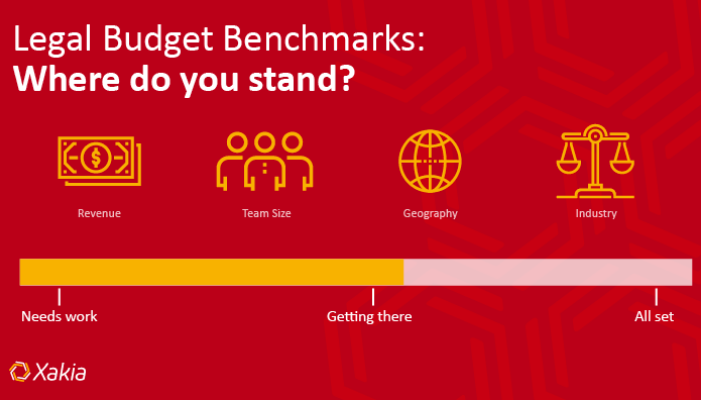 Every attorney that practices law knows that when you hand in legal documents they have to have a certain format, contain specific wording, and in some cases, even use a particular font. Formatting and organizing content is not unfamiliar territory for practicing attorneys. Therefore, it should come as no surprise that there are also best practices to format and organize your law blog article to optimize it for the internet and increase its chances of being placed on the first page of Google. The following are some guidelines that will help ensure that you use the best techniques to format and organize the valuable content you are providing to potential clients on your law firm’s website.
Every attorney that practices law knows that when you hand in legal documents they have to have a certain format, contain specific wording, and in some cases, even use a particular font. Formatting and organizing content is not unfamiliar territory for practicing attorneys. Therefore, it should come as no surprise that there are also best practices to format and organize your law blog article to optimize it for the internet and increase its chances of being placed on the first page of Google. The following are some guidelines that will help ensure that you use the best techniques to format and organize the valuable content you are providing to potential clients on your law firm’s website.
Create a Title That Captures Attention
The most important thing you can do is spend some time on the title of your article. Use numbers such as “The Top 5 Things You Should Never Do Before You Get Divorced,” or use intriguing words such as “Why You Need To Consider An Estate Plan Before The Age of 30.” One of the best ways to determine if you have a great title is with a free tool from CoSchedule called Headline Analyzer.
Use Headings and Subheadings Frequently
The use of headings and subheadings can not be overstated, and they are critical for both capturing reader attention and providing information to the Google bots about your content.
Readers of Your Law Blog Article
We all know that most people are looking at your content on a cell phone. Frankly, most people are simply skimming your content to find the information that they need as quickly as possible. With small screen sizes, and with users tending to speed through content, the best way to ensure your article reaches more users is to use headings and subheadings frequently.
Google Bots and Your Law Blog Article
Google bots also skim articles and they understand that the headings are of more importance than the rest of the article’s content. They are searching for keywords and trying to understand what the article is truly about in order to determine if it has value and should be ranked higher in their search algorithm. Give the Google bots some help by creating H2 and H3 subheadings that truly explain what your article is about.
How To Create Headings and Subheadings
While headings and subheadings are larger than normal text, it is important not to simply make the normal text a larger font size. You need to make your headings and subheadings actually H1, H2, H3, and H4 headings. You can do this through your formating toolbar where the headings are located. This is important because while a human reader will not notice the difference, a Google bot will read the heading as an actual heading, and not simply a larger font, and give it more importance.
Use Bullet Points as Often as Possible
In order to provide the best user-friendly experience, you should use bullet points as often as possible. The reasons for including bullet points in your article include the following:
- Breaking up large amounts of content into bite-sized pieces
- Allowing a reader to skim that material more quickly
- Creating snippets of information that do not need to be complete sentences
- Providing great formatting for long lists, such as the types of compensation awarded in personal injury cases, or the benefits of a trust over a will in certain circumstances, etc.
Internal Linking and External Linking
Make sure that you utilize linking to other pages to optimize your content and your website as a whole.
Internal Linking
When you create internal links (hyperlinks from one piece of text on your law firm’s website to another article or area on your law firm’s website), it helps your SEO in many ways including:
- Keeping the reader on your law firm’s website for a longer period of time, which helps the bounce rate of the website (how long it takes before a reader “bounces” off).
- Keeping a potential client on your law firm’s website also creates more of a connection to the reader making it more likely that they will pick up the phone and call your law firm.
- Linking with other articles that are similar in nature helps Google bots understand what your website and your content is about, and that you are an expert in that field of law.
It is important to remember that every type of law practice should be its own silo of content. Do not link articles about personal injury law with articles about estate planning, as this only confuses Google and works against your SEO.
External Linking
While it may seem counterintuitive that you would want to link away from your website, you should always have a few links to authoritative sources in every piece of your content. Authoritative sources are either government agencies, statutes, laws, or recognized organizations that are experts in that particular field. When you link to external sources, Google then identifies your article as one with authority. It is important to click the “no-follow” checkbox when you are creating these links, however, as the failure to do so could negatively impact your domain authority score (how strong and impactful your website is overall on the internet).
Optimize Pictures and Other Media
One of the best actions you can take for SEO on your website is to include pictures and media. However, videos and pictures often take up more “room” on your website and therefore should be optimized to load as fast as possible. While your readers will not notice a difference, the Google bots reward website pages that have faster load times. Some pictures may not appear to be large, however, the picture file can be massive. Take the time to install some free compression software on your website to compress your photos or other media to make it smaller without losing quality. For video, make sure that you are not hosting the video on your website, but rather simply linking to an outside platform, such as YouTube.
This Week’s Digital Marketing Action Steps:
- Create the title of a blog post using CoSchedule Headline Analyzer
- Write a blog post using different headings, subheadings, and bullet points
- Make sure to optimize your blog page for speed by compressing any pictures you include
Next week, we will look at how to actually promote and repurpose that article to increase your online presence and digital footprint.
 Annette Choti graduated from law school 20 years ago, and is now the CEO & Owner of Law Quill, a legal digital marketing agency focused on small and solo law firms. Law Quill is the only legal digital marketing agency that provides unique, SEO-optimized content, pre-packaged content, and courses for lawyers to learn SEO themselves through Law Quill Academy. Annette used to do theatre and professional comedy, which is not so different from the legal field if we are all being honest. Annette can be found on LinkedIn or at annette@lawquill.com
Annette Choti graduated from law school 20 years ago, and is now the CEO & Owner of Law Quill, a legal digital marketing agency focused on small and solo law firms. Law Quill is the only legal digital marketing agency that provides unique, SEO-optimized content, pre-packaged content, and courses for lawyers to learn SEO themselves through Law Quill Academy. Annette used to do theatre and professional comedy, which is not so different from the legal field if we are all being honest. Annette can be found on LinkedIn or at annette@lawquill.com






